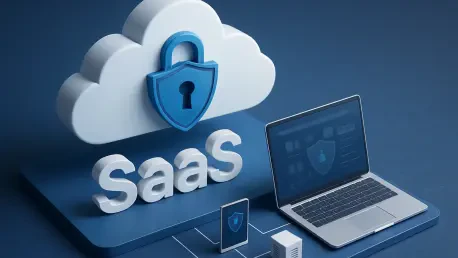In an era where cyber threats loom larger than ever, federal agencies face immense pressure to safeguard sensitive data and critical operations from increasingly sophisticated attacks, making the urgency to modernize outdated IT systems more apparent than ever. The push from the highest levels of government for robust security frameworks like zero trust adds to this critical need. Traditional systems, often a tangle of legacy applications, struggle to keep pace with evolving risks, leaving agencies vulnerable and bogged down by inefficiencies. Enter Software-as-a-Service (SaaS) platforms—a transformative solution that promises not only to bolster security through zero-trust principles but also to streamline operations and reduce costs. This shift represents a pivotal moment for government IT, offering a pathway to align with stringent federal requirements while refocusing resources on core missions rather than system maintenance.
Transforming Government IT Infrastructure
Addressing the Flaws of Legacy Systems
Federal IT environments have long been plagued by a patchwork of on-premises and custom-built applications, many of which were developed decades ago and are ill-equipped to handle modern security demands. These systems often rely on complex integrations that falter during updates, coupled with retrofitted security measures that fail to embody the “never trust, always verify” ethos of zero trust. The result is a reactive stance against cyber threats, where agencies spend more time patching vulnerabilities than advancing their objectives. Beyond security, the financial burden of maintaining such systems is staggering, with budgets drained by redundant licenses and costly overhauls. SaaS platforms offer a stark contrast by embedding security as a core component, unifying functions like HR and financial management under a single framework that ties access to specific roles, thus reducing risks like over-privileged accounts and insider threats.
Operational Gains from SaaS Adoption
Shifting to SaaS brings operational advantages that extend well beyond security enhancements for federal agencies. By offloading hosting, maintenance, and updates to vendors, IT staff are freed from routine tasks, allowing them to concentrate on strategic priorities that directly support agency missions. This move from a capital-intensive to an operational-expense model slashes long-term costs, eliminating the need for expensive infrastructure upgrades and duplicate software licenses. Furthermore, SaaS delivers continuous innovation through automatic updates, ensuring that new features, security patches, and compliance adjustments are integrated seamlessly without the disruptions common in legacy environments. This agility enables agencies to adapt swiftly to changing federal mandates and mission requirements, positioning them to respond effectively to both current and emerging challenges in a dynamic threat landscape.
Aligning with Federal Security Mandates
Building Zero Trust by Design
The federal government’s push for zero-trust architectures underscores the critical need for systems that inherently prioritize security over retroactive fixes, a principle at the heart of SaaS solutions. Unlike traditional setups where security is often an afterthought, SaaS platforms integrate zero-trust tenets from the ground up, ensuring that access is dynamically linked to an employee’s role and continuously verified. This approach minimizes vulnerabilities such as unauthorized access and insider threats, which are prevalent in fragmented legacy systems. By consolidating HR and financial management into a unified, secure environment, SaaS reduces the attack surface that agencies must defend. Compliance with federal standards, such as those required for FedRAMP certification, further assures that these platforms meet rigorous security benchmarks, providing a reliable foundation for agencies striving to meet stringent deadlines for zero-trust implementation.
Balancing Control and Collaboration
A common concern among federal agencies contemplating SaaS adoption is the potential loss of control over sensitive data, but this transition is structured to maintain agency oversight while leveraging vendor expertise. Under a shared responsibility model, agencies act as the data controllers, retaining ownership and accountability for their information, while vendors handle processing and infrastructure security. This balance ensures that agencies do not surrender autonomy but instead gain access to scalable resources and specialized knowledge that enhance system resilience. Implementation is also streamlined through partnerships with providers offering certified solutions that adhere to federal compliance standards, mitigating staffing shortages and accelerating deployment timelines. This collaborative framework empowers agencies to modernize without compromising their authority, aligning seamlessly with zero-trust goals and operational needs.
Paving the Way for a Secure Future
Reflecting on Past Challenges
Looking back, federal agencies grappled with significant hurdles posed by outdated IT systems that hindered both security and efficiency. The reliance on fragmented, legacy applications often led to spiraling costs and expanded vulnerabilities, diverting resources from mission-critical activities. Efforts to retrofit security onto these aging systems proved inadequate against the backdrop of evolving cyber threats, underscoring the limitations of maintaining the status quo. The persistent struggle to balance operational demands with federal mandates for zero trust revealed a clear need for a paradigm shift. SaaS emerged as a compelling response, offering a design that integrated robust security with cost-effective, agile operations, addressing the systemic issues that plagued government IT for years and setting a precedent for transformation.
Strategizing Next Steps for Modernization
Moving forward, federal agencies should prioritize a strategic transition to SaaS platforms as a cornerstone of achieving zero-trust security and operational excellence. Exploring partnerships with certified vendors can ease the migration process, ensuring compliance with federal standards while addressing resource constraints. Agencies must also invest in training to equip staff with the skills needed to manage data within a shared responsibility model, maintaining control over critical assets. Additionally, leveraging the continuous updates and scalability of SaaS can position agencies to adapt proactively to future threats and policy shifts. By viewing this modernization not as a mere upgrade but as a fundamental realignment of IT priorities, the path to a secure, mission-focused ecosystem becomes attainable, ultimately maximizing the impact of taxpayer dollars on public service outcomes.









